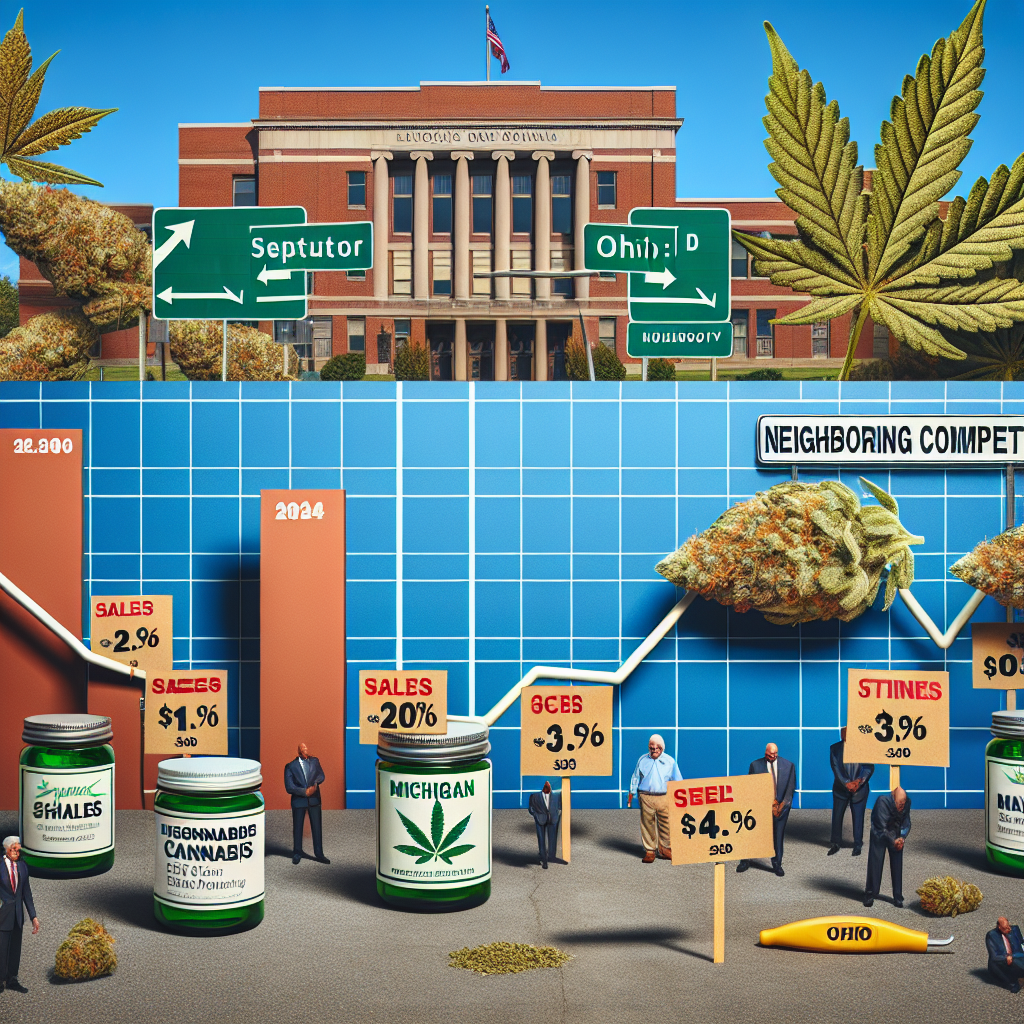
Michigan Cannabis Sales Face Market Challenges
Michigan’s cannabis industry has entered a complex phase characterized by fluctuating sales figures and market adjustments. Recent reports indicate that while Michigan previously enjoyed robust growth in cannabis sales, September 2024 presented challenges with a notable decline in both medical and adult-use categories.
The total sales for September 2024 amounted to $266.9 million, which represents a 10% drop from August 2024 and a 3% decline from the previous year. Notably, adult-use sales stood at $265.9 million, encompassing the majority of the market, while medical sales drastically fell, totaling just over $1 million, down from $4.9 million the year before.
Several factors contribute to these dynamics. Medical cannabis sales have plummeted by over 79% year-over-year, a stark decrease possibly influenced by regulatory changes and the growing accessibility of adult-use cannabis, which might diminish the need for medical registration. The adult-use sector, while only slightly down by 1.5% year-over-year, also saw a reduction, possibly impacted by the increasing competition from neighboring states like Ohio, where cannabis regulations have recently been relaxed.
The pricing trends offer additional insights. The average price for retail flower markedly decreased, affecting revenue. For instance, in the adult-use market, the price per ounce dipped from $100.14 to $78.68, a 21% decrease, reflecting broader national trends of price compression in mature cannabis markets. This price drop may attract more consumers but also compresses profit margins for producers and retailers.
Moreover, Michigan’s regulatory environment and its impact on market dynamics cannot be ignored. The state’s approach to licensing and regulation has facilitated the substantial proliferation of licensed operations, yet the market’s sustainability is tested by such rapid expansion, potentially leading to oversupply issues. A clear example of this is the significant decrease in price per pound of flower, which has dropped by 21.4% over the past year, suggesting a supply-driven price decline.
The ongoing adjustments in Michigan’s cannabis market underscore the delicate balance between supply, regulatory influence, market demand, and competitive pressures. As the state continues to navigate these challenges, stakeholders from producers to consumers are keenly watching how these factors will shape the future trajectory of the cannabis industry in Michigan.
For more detailed analysis and updates, visit:

